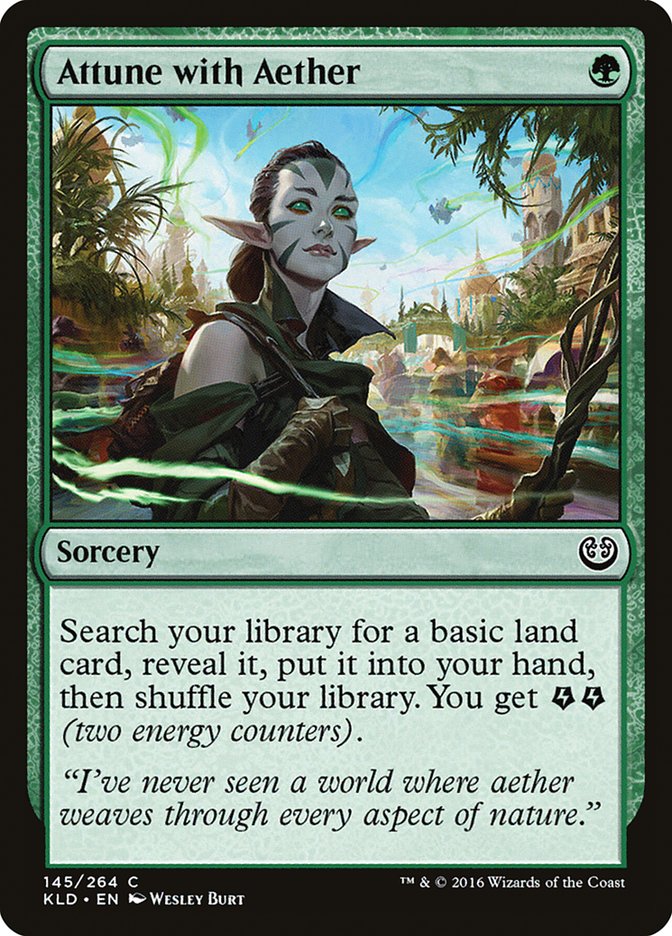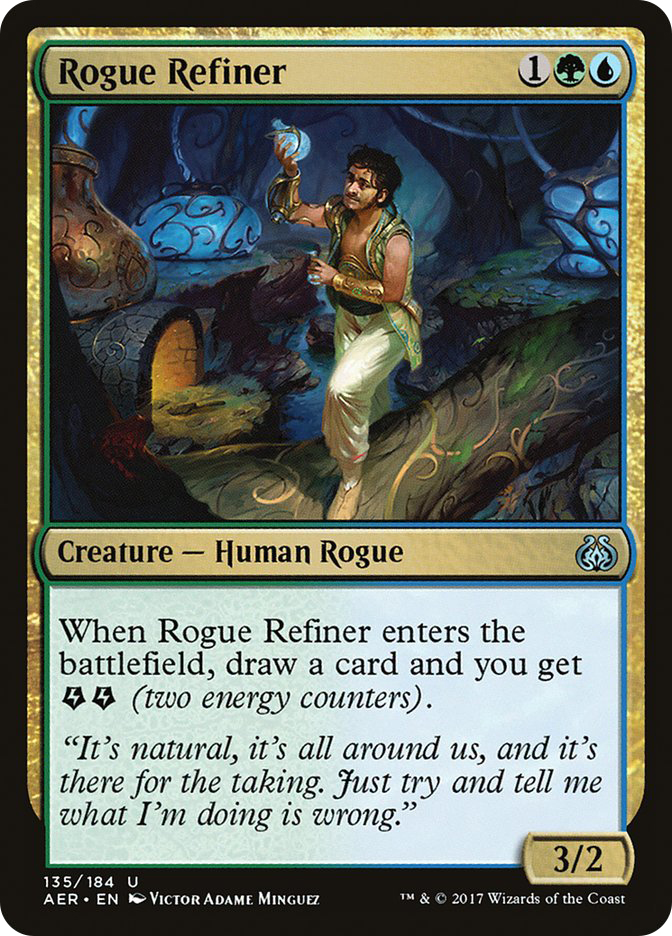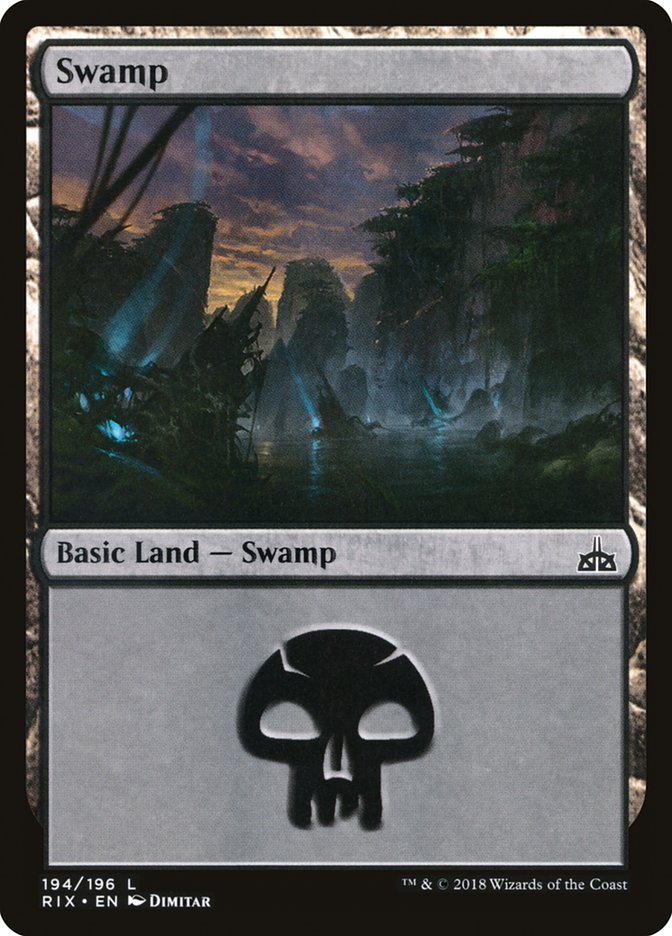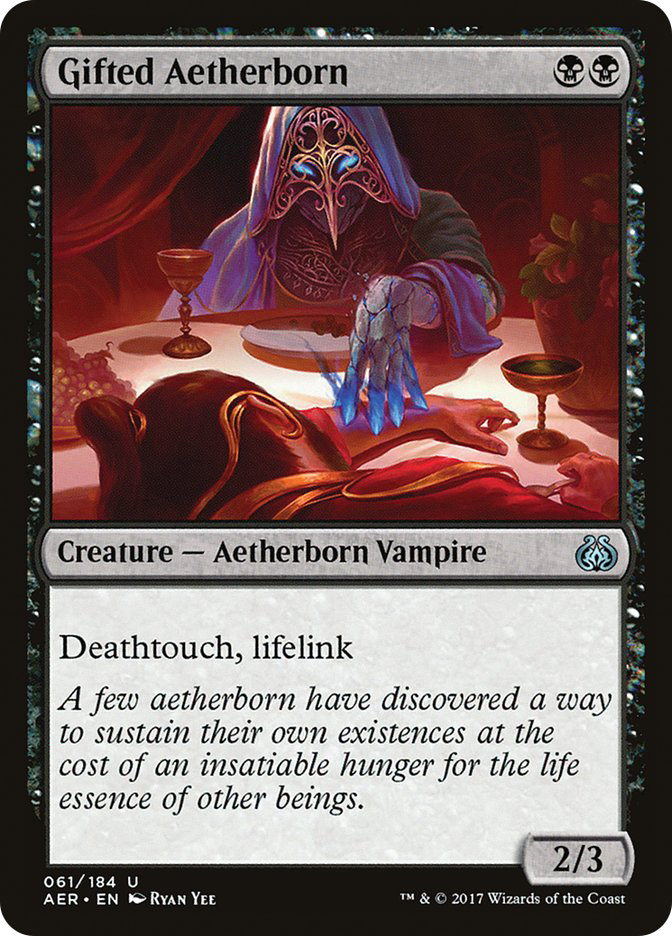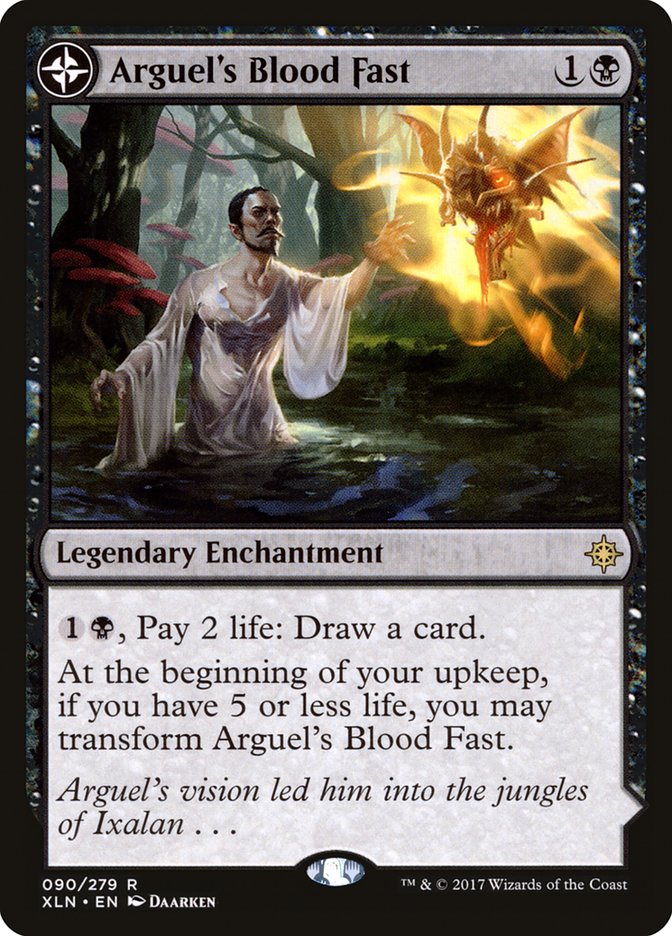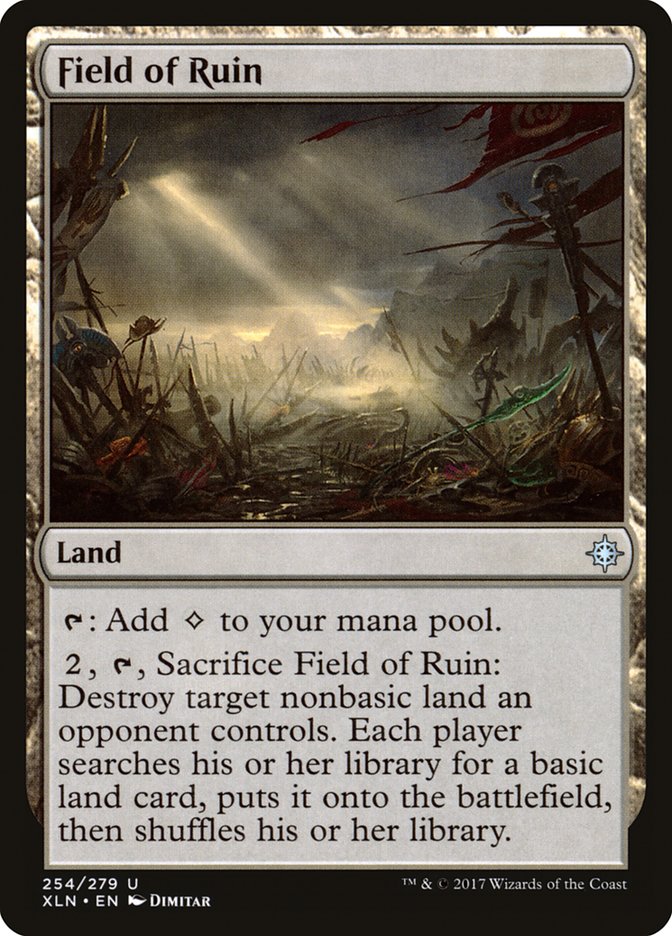Anyone who knows me personally knows that William Jensen winning the World
Championship in Boston last year was a significant life event for me. We’ve
been friends and roommates for years now and we prepared for that event
together. Preparation was a difficult task for Worlds because Ixalan had just been introduced into Standard and there hadn’t
been a major event to help us with decklists we may want to copy or use as
baselines for our own brews. Therefore, we needed to start entirely from
scratch.
I realize that Rivals of Ixalan has since been printed and they
banned some of the cards that we used in Temur Energy, but I still believe
there are lessons to be learned that can help us have an edge on the
competition moving forward. The reason I mentioned my preparation for
Worlds was because we literally sat in a house isolated from other humans
playing Magic from sun up to sun down trying to master Standard and explore
every possible archetype.
One funny side note from our testing was that Huey and I decided the power
level of Ixalan was so low that it was a mistake to play with any
of the cards from the set. I believed our edge in the tournament was to get
paired against other players who made the mistake of including cards from Ixalan in their Constructed deck (our only exception to this rule
was a few copies of Rootbound Crag). I also still can’t believe ten of the
twenty-four players at Worlds played Ramunap Red when, now, looking back
it’s an accepted fact that it was an underdog against Temur Energy.
Come on people! It’s science!
The biggest takeaway for me in Standard right now is that the mana is
really bad. I’m going to repeat myself because this statement should inform
your deck choice for the foreseeable future – manabases right now do not
meet basic standards for what I deem to be acceptable levels of
consistency, with the exception of Mono-Red Aggro. The reason Mono-Red wins
as much as it does is because it’s a one-color deck with extremely
consistent mana. We could sit around all day and argue about how broken
cards like Glorybringer, Hazoret the Fervent, and Chandra, Torch of
Defiance are, but the reality is it’s all about consistency.
The only pushed Constructed card for Mono-Red that was too good was Ramunap
Ruins. In games where you drew a Ramunap Ruins and a Sunscorched Desert,
you’re just printing five damage where there otherwise wouldn’t have been
any damage at all. In the history of Magic, the struggle between red aggro
decks and other Constructed decks built to beat them is how do you
stabilize at a low life total and turn the game around. It’s a classic type
of game that everyone enjoys playing. Now imagine having to play against a
red aggressive deck, but your starting life total is fifteen and not
twenty. That’s egregious! On top of that, the cost for them to play with
Ramunap Ruins was at an all-time low, as the land generated the deck’s
primary color of mana and it entered the battlefield untapped. Good
riddance!
For sake of example, here’s a 5-0 decklist I found from a Standard league
on Magic Online:
Creatures (27)
- 4 Bomat Courier
- 3 Kari Zev, Skyship Raider
- 4 Hazoret the Fervent
- 4 Ahn-Crop Crasher
- 4 Earthshaker Khenra
- 4 Rigging Runner
- 4 Fanatical Firebrand
Lands (24)
Spells (9)
Sideboard

If you want to truly understand my point about Standard having bad mana,
look no further than the above decklist. This deck plays 24 land, but let’s
just pretend for argument’s sake that they don’t get lucky and draw one of
their four copies of Inspiring Vantage during a game. That leaves that
manabase as 13 Mountains, 6 Plains, and 1 Aether Hub.
That’s like looking at a Sealed deck!
It’s like drafting red and white commons and playing 10 Mountains, 7
Plains, and hoping you draw one of each. Nothing about this deck shows me
that it’s trying to combine power with consistency but is instead
prioritizing power over consistency. I’m notoriously bad at identifying
decks that sacrifice consistency for power but occasionally I get it right
(see Temurge at Pro Tour Eldritch Moon).
The way Standard has worked lately is the power level of all the cards has
been really high, so no matter what color combination you play, you’re
going to have a pretty sweet curve topper. It can be Glorybringer, Regal
Caracal, Torrential Gearhulk, Verdurous Gearhulk, or The Scarab God, but
they’re all quite likely to lead to a win for the caster as long as they
can cast them at a high life total and on a stable battlefield. Magic is a
beautiful game, but at its core it’s really all about consistency and how
to find the perfect marriage between consistency and power.
At Pro Tour Hour of Devastation, when I played Ramunap Red I told
myself, “I’m a red beatdown player. If I win the die roll and make a Bomat
Courier, what can my opponent do on their first turn to kill it? Fatal Push
and Magma Spray.” We all know there are ways to kill it later in the game,
but as long as my deck is functioning as intended I should be able to play
a spell each turn after that and overload my opponent or at least deal
damage enough times to get them within Ramunap Ruins range. I think a
similar question should be asked today – “How do we get red or black mana
untapped on Turn 1?” My go-to answer in the past was Aether Hub, but now
I’m starting to suspect it might be old reliable…
If I were headed to GP Memphis this weekend, I would be playing some
version of the Brad Nelson style Sultai Midrange
he wrote about last week
. I’m in love with Fatal Push, Vraska’s Contempt, and The Scarab God.
Standard has always been my bread and butter, and when I play I do my best
to give myself a deck where I can play the type of games that I want to
play and avoid that feeling of helplessness that comes when you just get
run over. It could be arrogance or delusions of grandeur, but I always feel
like if I can come prepared with the right reactive cards, play well, and
outmaneuver my opponent in sideboarding, there’s almost nobody that can
beat me.
Take a look at the decks I’ve made the Top 8 of Pro Tours with:
- Jeskai Black
- B/W Devotion
- Jund
To say I have a preference for midrange would be an understatement. Sultai
Midrange just seems to check all the boxes that I look for and reminds me
of Abzan with Siege Rhino or Mono-Black Devotion with Gray Merchant of
Asphodel.
Creatures (20)
- 1 Gonti, Lord of Luxury
- 4 Glint-Sleeve Siphoner
- 4 Gifted Aetherborn
- 3 The Scarab God
- 3 Champion of Wits
- 1 Hostage Taker
- 2 Kitesail Freebooter
- 2 Ravenous Chupacabra
Planeswalkers (3)
Lands (26)
Spells (11)

It just seems to have everything. Champion of Wits in game 1 makes your
copies of The Scarab God supercharged while also giving you absurd game
against control, as casting one allows you to mitigate the downside of
having worthless removal spells you don’t want in the wrong matchups.
Champion also gives you a sick late game with the eternalize ability
simulating Careful Consideration.
Vraska’s Contempt was dismissed at first as a worse version of Hero’s
Downfall, but it seems now more than ever before that exiling creatures is
an absolute necessity given how many copies of Hazoret the Fervent, The
Scarab God, and Rekindling Phoenix are seeing play.
Gifted Aetherborn is my least favorite card in the deck. The ability to
turn an anti-aggro card into some real sauce against control when you draw
it in combination with Arguel’s Blood Fast is pretty sweet, but it’s just
too fancy for my tastes. I think Arguel’s Blood Fast is already an “I-win
ticket” redeemable for one free game win anytime it resolves against
control or ramp. It’s possible I’m setting my expectations too high and you
simply need to play Gifted Aetherborn on power level, the extra bonus
against Mono-Red, and the synergy with The Scarab God making 4/4 lifelink
creatures, but I hope to find a replacement soon.
Hostage Taker is just fake news. Every time I put it in a deck, it’s a
complete and utter embarrassment. Not only is it expensive, but it’s bad
when you’re behind and is occasionally a huge liability in situations where
you exile a creature with an enters the battlefield ability (or god forbid
an exerted Glorybinger). Worst of all, if you try and wait to play Hostage
Taker and cast the card you take all in one turn, the opponent can just
kill Hostage Taker with its ability on the stack! Do not play this card!
One card you should play? Field of Ruin, a card I have long held the belief
is an overpowered Magic card. It’s been a game changer in Modern as it
forces people to play with Wastes in Eldrazi Tron and basic Swamp in the
sideboard of G/B Tron. I actually think the mana in Standard is so bad
right now that using Field of Ruin as a way of disrupting the opponent and
functioning as an expensive Evolving Wilds that actually makes your mana
better when you use it is an underrated option. Not to mention that many
people play Path of Mettle, Thaumatic Compass, and Search for Azcanta in
their maindeck with the explicit goal of transforming each of those cards.
I had a game on Magic Online this week where I played Field of Ruin and
passed for my third turn. On my opponent’s third turn, they made a 4/3
Jadelight Ranger and explored a Glorybringer to the top of their deck. On
their end step, I activated Field of Ruin on their Hashap Oasis to get a
basic Swamp and then cast Fatal Push with revolt on the Jadelight Ranger.
To recap, my land upgraded from Field of Ruin to a basic Swamp (which I
kinda wanted anyways), it enabled revolt to turn my glorified Disfigure
into a Swords to Plowshares, it shuffled away my opponent’s Glorybringer
(hurting their consistency and generally decreasing the quality of their
draw), and it turned a Hashap Oasis into a Forest.
The opportunity cost to playing Field of Ruin is as low as it’s ever been
and in this instance they even paid me in free revolt for my Fatal Push and
the privilege of hurting my opponent’s consistency and decreasing the
quality of their draw. Just think about it – if both players start with
seven cards and you play a long grindy game where you get to trade a land
for a card like Search for Azcanta, that’s a huge win. It’s time people
start thinking about Field of Ruin in the same way they think of Celestial
Colonnade or Horizon Canopy; all three are utility lands that produce
immense value.
I haven’t tried it, but I’ve spent quite a bit of time considering
potential splash options for Sultai Midrange. If four Aether Hub is
mandatory for Glint-Sleeve Siphoner then all I need is 1 Forest with 4 Hub
and 4 Field of Ruin to enable splashing something like Vraska, Relic Seeker
or Appetite for the Unnatural. I may even want a Mountain for Chandra’s
Defeat to shore up my matchup against Mono-Red. Ultimately, though, I fear
I may just want better mana so I don’t sit around blaming my mana issues on
bad luck like the rest of us.
As just a hint for you savvy Standard players out there, there’s a lot of
spicy innovation in the decklist that won Worlds, and I think a lot of it
ports over pretty well to what people care about now. The format is ripe
for players who want to dedicate time to mastering their decks and
exploiting weaknesses.
My one big prediction for Grand Prix Memphis? The Top 8 will be filled with
skilled, formidable players who take advantage of all 75 slots they have to
work with.


